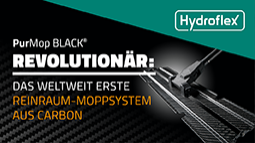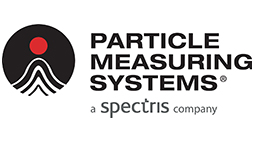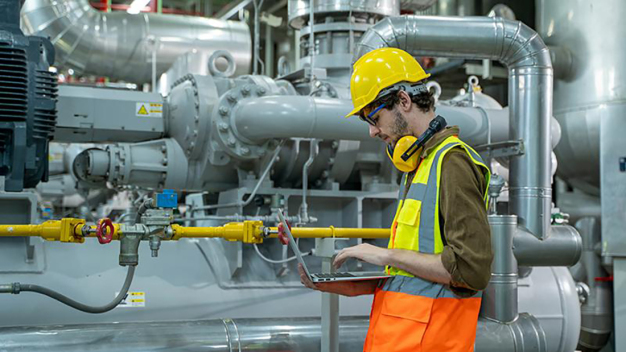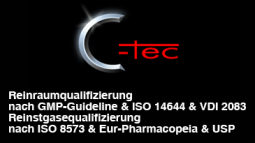- Feuchte
Kevin Walsh
Häufige Probleme bei der Feuchtemessung und wie man sie vermeidet
Genaue Messungen beginnen mit der richtigen Installation
Bei der Installation von Sensoren können zahlreiche Fehler gemacht werden, die alle zu Messabweichungen führen können. Ungenaue Messungen können zu übermäßigem Energieverbrauch, geringer Produktqualität und Prozesseffizienz, teuren Rückrufen aufgrund von mangelnder Richtlinienkonformität und suboptimalen Bedingungen für Menschen in Gebäuden führen. Die folgenden Tipps helfen Ihnen dabei, die Installation auf Anhieb richtig vorzunehmen und auf diese Weise die Messgenauigkeit zu verbessern.
Bei der Installation interner Wandsensoren ist immer Folgendes zu beachten:
1. Wählen eines geeigneten Installationsorts
Der wichtigste Gesichtspunkt bei der Installation eines Messsensors zur Kontrolle von Räumen, in denen sich Personen aufhalten, ist dessen Standort. Wenn Sie die Umgebungsbedingungen messen möchten, denen Personen in einem Raum ausgesetzt sind, sollten Sie unbedingt einen repräsentativen Standort mit freier Luftzirkulation und ohne nahe gelegene Wärmequellen wählen.
Einige häufige Fehler, die Sie vermeiden sollten:
– Montieren Sie Sensoren nicht in Bereichen mit beschränkter Luftzirkulation, z. B. hinter Türen, Geräten oder Möbeln.
– Montieren Sie Sensoren nicht in der Nähe von Objekten, die Wärme erzeugen, z. B. einem Heizkörper, einem Heizungskanal oder über einem Drucker oder Kopierer.
– Montieren Sie Sensoren nicht an Stellen mit direkter Sonneneinstrahlung. Berücksichtigen Sie hierbei den Stand der Sonne zu jeder Tageszeit.
– Montieren Sie Wandsensoren nicht an der Decke.
– Montieren Sie Sensoren nicht entlang eines Luftkanals. Hierdurch kann sich der Messwert schneller ändern, als im Raum selbst ein Ausgleich der Umgebungsbedingungen stattfinden kann. Dies wiederum bedeutet, dass häufige Justierungen am System vorgenommen werden müssen.
2. Montieren des Sensors in der richtigen Richtung
Bei Wandsensoren sind sowohl der Sensor als auch die Elektronik in einem kompakten Gehäuse untergebracht, sodass sie für die Montage in einer vorgegebenen Richtung konzipiert sind. Jegliche in der Elektronik erzeugte Wärme steigt nach oben, sodass sich der Sensor unterhalb der Elektronik befinden muss, damit die Wärme die Messung nicht beeinträchtigt. Darüber hinaus kann bei einer seitlichen Montage des Sensors keine heiße Luft entweichen, was zu einem höheren Temperaturwert und einem niedrigeren Feuchtewert führt.
3. Montieren mehrerer Sensoren nebeneinander
Einige Wandsensoren erzeugen Wärme. Es ist daher nicht empfehlenswert, einen Temperatur- oder Feuchtesensor über einem anderen Wandgerät zu montieren. Andernfalls kann die Wärme die Messwerte des anderen Sensors verfälschen. Dies kann insbesondere bei Gassensoren ein Problem darstellen, die sie bekanntermaßen mehr Wärme erzeugen als andere Sensoren. Stattdessen sollten Sie die Sensoren idealerweise nebeneinander montieren und dabei den Installationsempfehlungen des Herstellers folgen. Müssen Sensoren übereinander montiert werden, sollte der wärmere Sensor deutlich über allen anderen Sensoren platziert werden.
4. Berücksichtigen des Luftstroms im Raum
Serienmäßige Feuchte- und Temperatursensoren sind so konzipiert, dass sie in einer typischen Büroumgebung gut funktionieren. Wenn Sie Sensoren in einem Raum mit einem nach unten gerichteten Luftstrom verwenden, beispielsweise in einem Reinraum, strömt Heißluft von der Oberseite der Elektronik nach unten auf die Sensoren und lässt die gemessene Temperatur ansteigen. Die Lösung hierfür ist die Verwendung eines Sensors, der für Reinräume und ähnliche Räumlichkeiten konzipiert ist. Bei diesen Sensoren wurden Sensor und Elektronik voneinander getrennt. Auf diese Weise werden die Sensoren von jeglicher Erwärmung ferngehalten, haben aber dennoch einen ausreichenden Kontakt zur Umgebung.
5. Beachten von Druckdifferenzen und schlechter Abdichtung
Wenn zwischen dem Raum, in dem die Messung stattfindet, und den Wandhohlräumen im Gebäude ein Druckunterschied besteht, kann dies zu ungenauen Messwerten führen. Ein niedrigerer Druck im Raum kann dazu führen, dass kalte Luft durch die Wandöffnungen für die Kabel direkt in den Sensor strömt, wodurch der Temperaturmesswert erheblich sinkt. Dieses Problem lässt sich durch Abdichten der Kabeldurchführung lösen.
6. Vermeiden von durch Wärmeleitung verursachten Fehlern
Beton- und Stahlwände können Wärme leiten, sodass mit Schrauben an der Wand befestigte Sensoren die tatsächliche Lufttemperatur und -feuchte möglicherweise nicht genau anzeigen. Dies lässt sich durch Anbringen einer Isolierschicht zwischen Wand und Sender oder durch Montieren des Sensors an einer Innenwand oder einer stärker isolierten Oberfläche vermeiden.
Beton wirkt sich außerdem auf CO2-Messungen aus. Wenn Sie einen CO2-Sensor an einer Betonoberfläche montieren, erhalten Sie einen extrem niedrigen CO2-Wert, der für die Luft im Raum nicht repräsentativ ist. Dieses Problem lässt sich in der Regel durch die Befestigung einer Platte unter dem Sensor beheben.
7. Vermeiden von durch Körperwärme verursachten Fehlern
Diese Art von Fehler tritt normalerweise bei manuellen Messungen auf, bei denen die Körperwärme zu ungenauen Messwerten führt. Wenn Sie manuelle Messungen durchführen, halten Sie das Messgerät nicht zu nahe am Körper und vermeiden Sie es, auf den Sensor zu atmen.
Bei der Installation von in Kanälen installierten Sensoren ist immer Folgendes zu beachten:
1 Sicherstellen ausgeglichener Innen- und Außentemperaturen
Bei in Kanälen montierten Geräten ist die häufigste Fehlerquelle die Temperaturdifferenz zwischen der Luft innerhalb und außerhalb des Kanals, beispielsweise wenn Sie die Außenbedingungen innerhalb eines Einlasskanals messen möchten. Temperaturdifferenzen können dazu führen, dass Wärme durch das Rohr des Kanalsensors fließt, wodurch die Temperatur- und Feuchtemesswerte verfälscht werden.
Diese Effekte sind in isolierten Kanälen oder solchen mit niedrigen Luftströmungsgeschwindigkeiten oder geringeren Sensoreinbautiefen ausgeprägter. Die Lösung besteht darin, einen hochwertigen Außensensor zu verwenden oder den Sensor ordnungsgemäß zu isolieren.
2. Vorbeugen von Schäden durch Kondenswasser
Wenn im Kanal eine hohe Feuchte vorherrscht und die Außentemperatur niedriger ist, kann die Wärmeleitung das Rohr mit dem Sensor abkühlen, was zur Bildung von Kondenswasser am Sensor führt. Auch im Inneren des Kanals kann sich Kondenswasser bilden und durch das Rohr zum Sensor laufen. Wenn der Sensor nach unten geneigt ist, kann dies zu falschen Messwerten oder sogar zu Korrosion führen. Um die Auswirkungen und mögliche Schäden durch Kondenswasser zu minimieren, sollten Sie den Sensor horizontal oder gegebenenfalls leicht nach oben geneigt montieren. Dadurch kann jegliches Kondenswasser sicher vom Sensorelement abtropfen.
3. Vermeiden der Montage von Sensoren in Totleitungen
Wie wir bei Sensoren für die Innenwandmontage gesehen haben, ist es wichtig, die Sensoren an einer repräsentativen Stelle zu montieren. Wenn Sie einen Sensor in einer Totleitung montieren, strömt möglicherweise keine Luft am Sensor vorbei und die Messung ist nicht repräsentativ für die Bedingungen des Hauptluftstroms. Die Luft um den Sensor herum ändert sich langsamer als der Hauptluftstrom, sodass die Messwerte für die aktuellen Bedingungen nicht immer genau sind. Sorgen Sie stets dafür, dass der Sensor ständigen Kontakt mit dem richtigen Luftstrom hat, und vermeiden Sie bei der Montage Totleitungen.
4. Berücksichtigen sämtlicher Optionen bei der teilweisen Installation innerhalb eines Prozesses
Bei Sensoren, die teilweise innerhalb und teilweise außerhalb eines Prozesses installiert sind, kann die Temperaturdifferenz sehr groß sein. Wenn beispielsweise die Temperatur und die relative Feuchte in einem Backofen durch eine isolierte Wand hindurch gemessen werden, hat ein Sensorgehäuse aus Metall mit einem Wärmeleck zur Folge, dass der Sensor nicht die tatsächlichen Ofenbedingungen sondern eine niedrigere Temperatur und eine höhere relative Feuchte anzeigt. Das Wärmeleck ist strömungsabhängig. Bei ruhender Luft kühlt die Sonde stärker ab, wodurch sich eine größere Fehlertoleranz ergibt. Bei höherer Feuchte sind nicht nur die Messwerte für die Temperatur und die relative Feuchte falsch, sondern man bekommt es außerdem mit einem Kondensationsproblem zu tun.
Für dieses Problem gibt es zwei Lösungen. Bei der ersten Lösung wird die Installation verbessert. Versetzen Sie die Sonde tiefer in den Prozess und/oder isolieren Sie alle Teile der Sonde, die sich außerhalb des Prozesses befinden. Auf diese Weise minimieren Sie die Temperaturdifferenz und Sie können die relative Feuchte exakt messen. Außerdem könnten Sie darüber nachdenken, ob es überhaupt erforderlich ist, die relative Feuchte zu messen. Sie könnten andere Parameter verwenden, von denen einige den Vorteil haben, dass sie nicht temperaturabhängig sind. Somit könnten Sie eine beheizte Sonde verwenden, auf der sich kein Kondenswasser bilden kann.
5. Vermeiden der Montage von Sensoren zu nahe an einem Befeuchter
In Kanälen montierte Feuchtesensoren werden häufig zur Feuchteregelung eingesetzt, für die Vernebler oder Sprühbefeuchter verwendet werden. Wenn ein Kanalsensor zu nahe an einem Befeuchter montiert wird, sammelt sich auf dem Sensor Kondenswasser, wodurch genaue Messungen unmöglich werden.
Im schlimmsten Fall wird der Sensor hierdurch zerstört. Allerdings ist es selbst in weniger schwerwiegenden Fällen unmöglich, mithilfe der Messwerte eines Sensors, der fortwährend Feuchtigkeit ausgesetzt ist, irgendetwas präzise zu kontrollieren. Das regelmäßige Nasswerden und Trocknen des Sensors hat starke Schwankungen der Feuchtewerte zur Folge, was dazu führt, dass die Geräte ununterbrochen laufen und die Bedingungen nicht ordnungsgemäß eingehalten werden. Darüber hinaus werden Abweichungen und Verschmutzung des Sensors beschleunigt, was die Ungenauigkeiten noch weiter verstärkt.
Um diese Probleme zu vermeiden, sollten Kanalsensoren in ausreichendem Abstand von Befeuchtern montiert werden. Dieser Abstand hängt von der Kanalgröße und den Durchflussraten ab. Als Faustregel werden jedoch fünf Meter empfohlen. Bei der Montage eines Kanalsensors ist es außerdem empfehlenswert, nach dem Sensor einen zusätzlichen Anschluss vorzusehen, an dem vorübergehend eine Referenzsonde zur Überprüfung und Kalibrierung des Primärsensors installiert werden kann. Dieser Anschluss kann bei Nichtgebrauch mit Panzerband abgedeckt werden, um Undichtigkeiten zu vermeiden.
Bei der Installation von Außensensoren ist immer Folgendes zu beachten:
1. Verwenden eines Strahlungsschutzes
Sonnenstrahlung kann Sensoren problemlos um 2 °C erwärmen. Um die Auswirkungen der Sonnenstrahlung zu vermeiden, verwenden Sie einen Sensor mit einem hochwertigen Strahlungsschutz, der unter den Platten schwarz ist. Wind verringert die Erwärmung. Montieren Sie Ihren Sensor daher an einer Stelle mit freier Luftzirkulation. Halten Sie außerdem die Schutzabdeckung sauber, da sich eine verschmutzte Schutzabdeckung stärker erwärmt. In städtischen Umgebungen kann eine häufigere Reinigung erforderlich sein. Sieht die Außenseite der Abdeckung schwarz oder schmutzig aus, ist die Reinigung bereits überfällig! Wenn Sie den Sensor an der Wand montieren, sind nach Norden ausgerichtete Wände in der Regel die bessere Wahl, da sie der Sonnenstrahlung weit weniger stark ausgesetzt sind.
2. Schützen des Sensors vor Regen und schlechtem Wetter
Regen, Schnee oder Kondenswasser können dazu führen, dass sich Wasser auf oder in der Nähe des Sensors sammelt, was wiederum Sensorabweichungen und zu hohe Feuchtewerte zur Folge hat. Schlechtes Wetter kann den Sensor ebenfalls beschädigen. Es gibt mehrere Möglichkeiten, den Sensor vor Witterungseinflüssen zu schützen:
– Verwenden Sie einen Sensor, der für den Einsatz unter feuchten Außenbedingungen ausgelegt ist.
– Montieren Sie den Sensor an einer Stelle mit guter Luftzirkulation. Wind lässt Wasser verdunsten und sorgt so für zuverlässige Messungen.
– Verwenden Sie in industriellen Anwendungen eine beheizte Sonde, um die Auswirkungen von Kondensation zu verhindern.
3. Montieren des Sensors abseits von anderen Wärmequellen
Die Wände von Gebäuden können eine hohe thermische Masse aufweisen und Wärme oder Kälte speichern. Sie können außerdem durch Sonnenstrahlung erwärmt werden. Wenn der Sensor ohne ausreichenden Offset nahe einer Wand oder einem schwarzen Dach montiert wird, kann dies zu ungenauen Messungen führen.
Um derartige Erwärmungseffekte zu reduzieren, sollten Sensoren für den Außenbereich an einer Stelle montiert werden, an der sie der Luftströmung und dem Wind ungehindert ausgesetzt sind. Idealerweise sollten sie an einem völlig freistehenden Mast abseits von Gebäuden oder auf dem Dach installiert werden. Vermeiden Sie dunkle Flächen mit direkter Sonneneinstrahlung und montieren Sie Sensoren nicht unter der Dachtraufe. Unter der Traufe staut sich die Heißluft, was zu ungenauen und unzuverlässigen Messergebnissen führt.
Webinarreihe „Humidity Academy“ von Vaisala
In der industriellen Fertigung kann Feuchte je nach Anwendung sowohl notwendig als auch unerwünscht sein. Ein besseres Verständnis von Feuchte kann Ihnen helfen, sie besser zu kontrollieren. So können Sie die Prozesseffizienz und die Produktqualität verbessern und dabei gleichzeitig Energie sparen.
In der Webinarreihe „Humidity Academy“ von Vaisala teilen Vaisala-Expert*innen ihr Wissen zur Theorie und Messung von Feuchte sowie ihr Know-how bezüglich der Wartung revisionssicherer Messinstrumente mit langer Lebensdauer. Jede kleine Episode bietet Beispiele und Berechnungen aus der Praxis, die Ihrer Anwendung zugutekommen und auf den im Verlauf der Webinarreihe gewonnenen Erkenntnissen aufbauen.
![]()
Vaisala GmbH
Rheinwerkallee 2
53227 Bonn
Deutschland
Telefon: +49 228 249710
Telefax: +49 228 2497111
eMail: vertrieb@vaisala.com
Internet: http://www.vaisala.de









